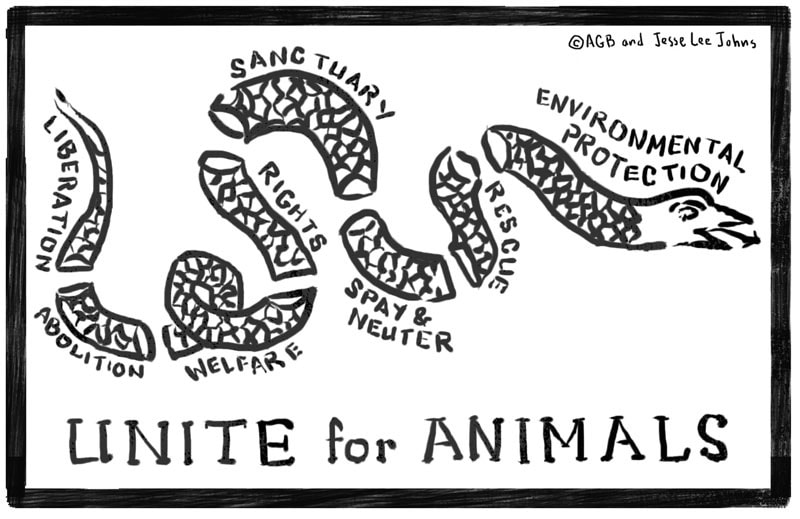Standard
HS.C2.3 - Evaluate the evolution of ideals and rights established in historical documents, legislation, executive actions, and court cases.
Learning Target
Equality: I can analyze movements for equality throughout U.S. History and compare them to the actions of the Student Nonviolent Coordinating Committee (SNCC).
Instructions
Watch the TedTalk Video - What Will Future Generations Think of Our Treatment of Animals?
Use the Website - Animal Welfare Act Quick Reference Guides to complete the Guided Questions
Last, analyze the Political Cartoon.
Guided Questions
Read the Introduction - What is the Animal Welfare Act?
Using the section Enhancement for Primates - What is something you found interesting about the requirements of this section?
Using the section Exercise of Dogs - What is something you found interesting about the requirements in this section?
HS.C2.3 - Evaluate the evolution of ideals and rights established in historical documents, legislation, executive actions, and court cases.
Learning Target
Equality: I can analyze movements for equality throughout U.S. History and compare them to the actions of the Student Nonviolent Coordinating Committee (SNCC).
Instructions
Watch the TedTalk Video - What Will Future Generations Think of Our Treatment of Animals?
Use the Website - Animal Welfare Act Quick Reference Guides to complete the Guided Questions
Last, analyze the Political Cartoon.
Guided Questions
Read the Introduction - What is the Animal Welfare Act?
Using the section Enhancement for Primates - What is something you found interesting about the requirements of this section?
Using the section Exercise of Dogs - What is something you found interesting about the requirements in this section?
Analysis of a Political Cartoon
Analyzing is a process that will help you better understand what you are trying to figure out.
Start off by stating what you see so that you can try to make sense of what the overall message is.
First, what do you see? Be very specific. Colors. Words. Symbols.
Second, what do you think the overall message is of this source?
Start off by stating what you see so that you can try to make sense of what the overall message is.
First, what do you see? Be very specific. Colors. Words. Symbols.
Second, what do you think the overall message is of this source?
